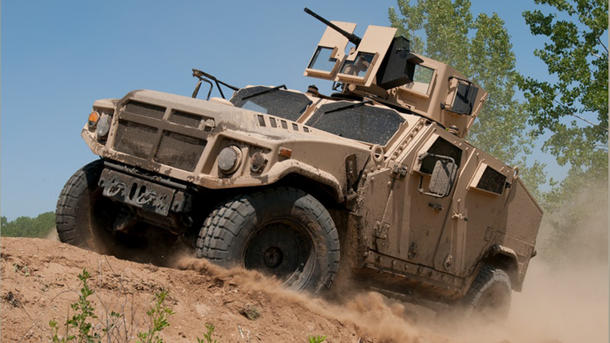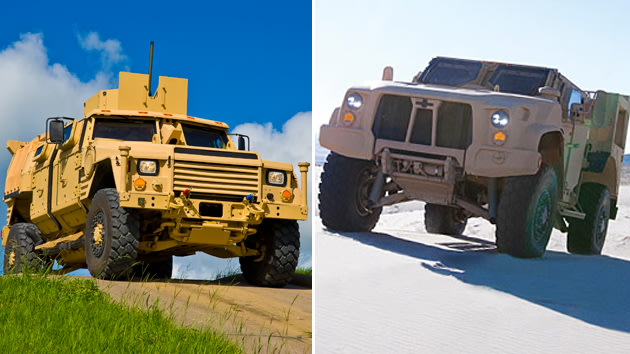In the lingo of the U.S. Army, the next-generation of battle trucks will be known as the Joint Light Tactical Vehicle. To everyone else, it's known as the replacement for the Humvee -- and one of the few multibillion-dollar U.S. defense contracts still up for grabs. On Wednesday, the Army narrowed its list of potential Humvee successors to three. Here's a look at what the 21st-century jeep will look like.
The winners -- AM General, builder of the current Humvee; Lockheed Martin and Oshkosh Corp. -- beat out three other teams from Navistar, General Dynamics and BAE Systems. The three top entrants won contracts worth about $60 million each to build a small fleet of demonstration models that will be tested by the Army. Whichever team prevails will win a contract to build 20,000 vehicles for the U.S. Army and another 5,000 for the Marines at an estimated cost of $5 billion; the eventual deal could be worth far more depending on options and whether other countries buy the same vehicle -- a rare opportunity in a era where the Defense Department faces up to $1 trillion in budget cuts.
Compared to the current Humvee, the new designs offer far more interior space; compared to the original World War II-era Jeep, they're tanks with wheels that can travel farther and faster over rough terrain and rivers. While required to be less expensive per vehicle, all were designed to withstand blasts from mines and roadside bombs, a leading killer of U.S. troops in Iraq and Afghanistan.
The Lockheed Martin JLTV and the Oshkosh L-ATV
AM General's BRV-O entry sports a 3,500-lb. payload, self-leveling suspension and a 3.2-liter, 300-hp turbocharged six-cylinder diesel meant to be far more fuel-efficient than the V-8s used in the Humvee. Lockheed Martin says its JLTV has been designed to minimize weight -- allowing it to be hauled by helicopter -- while avoiding high-cost materials like titanium. And the Oshkosh L-ATV offers a suspension designed to give its wheels 20 inches of vertical movement over inhospitable terrain.
The companies will deliver their testing units to the Army over the next year; the Army will take two more years to test before picking a winner sometime in 2015. Here's hoping by then there will be less demand for hauling Americans into harm's way.
source

